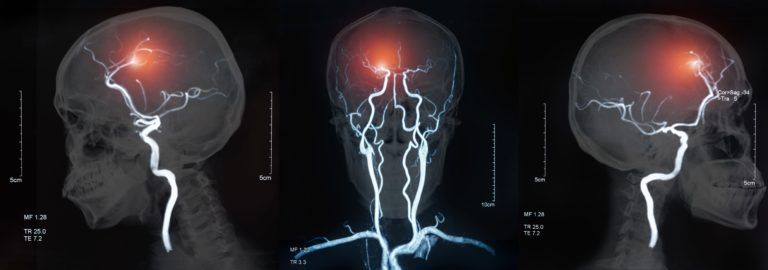Aneurysms and Risk Factors Associated With Them

Aneurysm is a term that is known to almost anyone who’s ever watched a medical TV show but is incorrectly understood by that same body of people. Due to the unpredictable nature of some aneurysms and the critical nature of what happens when one occurs in a vital area of the body, such as the brain, they’re a favorite foil of entertainment medical dramas. Thankfully they aren’t nearly as risky, in most cases, as media makes them out to be, and there are things you can do to help lower your risk of an aneurysm.
What Is An Aneurysm?
Most people think that an aneurysm is what happens when a weak spot in a blood vessel explodes in a catastrophic event that is almost always life-ending, but this isn’t entirely accurate. An aneurysm actually refers to the weak spot itself, a ballooning of the wall of a blood vessel that is at risk of leaking, exploding, or growing large enough to create a problem. Brain aneurysms are the most well known due to media and the relatively high risk of fatality associated with them.
Are Aneurysms Always Fatal?
In most cases, an aneurysm isn’t fatal though the rupturing of a brain aneurysm, an event that is known as a hemorrhagic stroke, can be extremely dangerous and life-threatening. The risk of fatality in the rupture of an aneurysm in other areas of the body largely depends on their location and the size of the aneurysm itself.
What Can I Do To Reduce My Risk Of an Aneurysm?
Smokers, we know you’re tired of the health industry harping on your favorite vice, but the fact of the matter is that smoking has been identified as one of the biggest risk factors related to aneurysms right behind cocaine use. Those with high blood pressure or hypertension are also at risk thanks to the additional strain placed on their blood vessels. If you happen to suffer from tumors, have experienced traumatic injury, or have a family history or congenital abnormalities, you should speak with your physician to see how they affect your risk of aneurysms.
What Symptoms Will Alert Me To The Presence Of An Aneurysm?
An intense headache that appears out of nowhere is one indicator of an aneurysm that cannot be ignored, and should immediately result in a trip to the ER and a call to 911. Dilated pupils, blurred or double vision, a drooping eyelid, seizure, suddenly stiff neck, or a loss of balance or ability to walk normally is also cause for an immediate trip to the hospital. A ruptured aneurysm, especially in the brain, has a high likelihood of being fatal and necessitates a trip to the ER.
If you’re concerned that you may be at risk of an aneurysm and want a professional consultation, pick up the phone and contact Dr. Diana Wilson at the Neurosurgical and Spine Consultants, P.A. in Fort Worth Texas. Their staff works to improve the lives of their patients through preventative care and monitoring of conditions like these, and they’ll be happy to welcome you to their family.


Recent Comments